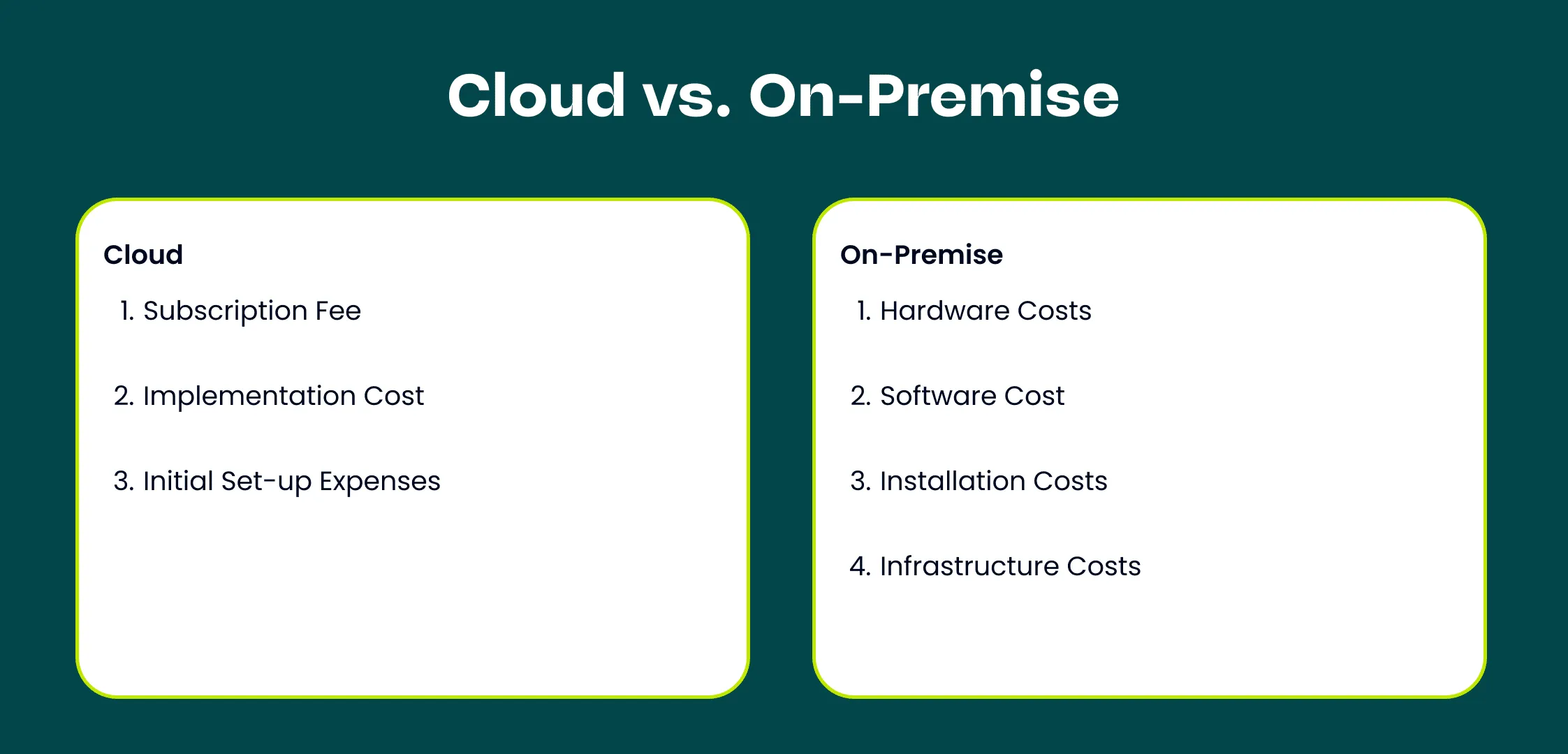Cloud computing has revolutionized the way businesses operate, offering scalable, flexible, and efficient solutions without the need for costly physical infrastructure. Whether you’re considering a move to the cloud or are already in the process of cloud migration, understanding the true cost—especially when comparing Atlassian Cloud pricing to Atlassian on-premise vs cloud options—and the numerous benefits it can provide is essential.
Cloud migration is more than just a shift in technology—it’s a strategic move that positions your organization for growth and innovation. For example, comparing Jira Cloud vs on-premise shows that the Jira Cloud cost may seem higher upfront, but the long-term operational benefits and reduced IT overhead can be substantial.
As we dive deeper into the financial costs, we’ll explore how the cloud, particularly with Atlassian, not only helps businesses save on operational costs but also unlocks new opportunities for efficiency and competitive advantage. The real question isn’t whether to migrate, but how soon your organization can start reaping the benefits of this transformative technology.
To fully understand the benefits and implications of moving to the cloud—and to evaluate the cost of moving to the cloud for tools like Jira and Confluence—it’s important to first grasp the basic concepts of cloud computing and cloud migration.
What is Cloud Computing?

Cloud computing delivers computing resources and services over the internet or through a private network on an on-demand basis. Rather than purchasing, owning, and maintaining physical data centers and servers, businesses can access essential technology services—such as computing power, storage, and databases—whenever needed from a cloud provider. This flexibility is the foundation of Atlassian Cloud pricing models, allowing companies to pay for what they actually use.
What is Cloud Migration?
Cloud migration refers to the process of transferring applications, data, and other IT operations to a cloud computing environment. This transition enables organizations to take advantage of the cloud’s flexibility, scalability, and cost-saving benefits. In the Atlassian ecosystem, this means moving from on-premise solutions to Atlassian Cloud, often comparing Confluence Cloud pricing and Jira Cloud cost to current Data Center expenses.
Should Your Organization Move to the Cloud?
The decision to move to the cloud isn’t just about cost savings or scalability—it’s about positioning your business within a dynamic, integrated ecosystem that drives long-term growth. The cloud empowers organizations to become more agile, more innovative, and better equipped to navigate an ever-changing market landscape. In fact, it’s no longer a matter of “if,” but when businesses will adopt cloud solutions to stay competitive.
As Gartner predicted in 2019, by the end of 2025, 85% of enterprises will have phased out their traditional data centers. By 2028, Gartner suggests cloud computing will no longer be optional, but rather an essential element of any business strategy. According to a VP analyst at Gartner, “Organizations are actively investing in cloud technology due to its potential to foster innovation, create market disruptions, and enhance customer retention in order to gain a competitive edge.” (Source: Gartner)
The shift toward the cloud is further accelerated by the power of artificial intelligence (AI), which enables businesses to unlock unprecedented opportunities at scale. For instance, tools like Atlassian Intelligence (AI) , available in Premium and Enterprise Jira Cloud and Confluence Cloud plans, can only be utilized in the cloud environment to maximize productivity through AI-powered enhancements (although Atlassian Rovo is available as a connector for data centers).
Therefore, moving to the cloud isn’t just about following a trend—it’s about securing your business’s competitive advantage in a rapidly evolving market. Beyond scalability, the cloud offers an entire ecosystem of integrated tools and services that can propel your business forward. The question is no longer whether your organization should move to the cloud, but how soon can you begin to tap into these transformative capabilities?
As we explore the cost of cloud vs. on-premise solutions, it’s important to consider not just the immediate financial benefits, but also the long-term strategic advantages the Cloud can offer. Let’s take a closer look at the true cost comparison between these two deployments.
The Cost of Cloud vs. On-Prem
When comparing the cost of Atlassian Cloud to on-premise solutions, it’s important to understand the pricing models for both. On-premise solutions may initially appear more affordable, but a deeper analysis of the long-term costs and benefits reveals that cloud solutions often offer greater value and flexibility.

The Price of Atlassian Cloud
The Atlassian Cloud pricing structure is transparent and tiered, offering flexibility based on the size of the organization and the services required. Typically, businesses pay a monthly or annual subscription fee based on the number of users, storage, and features they need. For example, for Atlassian’s Jira Cloud there are 3 paid plans: Standard, Premium and Enterprise.

Example of 300 users monthly subscription fee. Source: Atlassian

Example of 801 users annual subscription fee. Source: Atlassian
As of January 2025, the current listed price per user per month for the Standard plan is $7.53, and for the Premium plan, it is $13.53. An Enterprise Plan is an option if your company has over 801 users. This plan is billed annually for $155,000. Check out Atlassian’s official documentation for up-to-date pricing.
These flexible plans allow organizations to pay for exactly what they use, making cloud services ideal for growing companies that need cost-effective, scalable solutions. Additionally, Atlassian Cloud plans include access to a suite of products within the ecosystem, including Confluence, Jira Service Management, Trello, and more, providing an all-in-one solution for businesses. Essentially, Jira Cloud costs and Confluence Cloud pricing follow a similar per-user subscription model, ensuring you only pay for the capacity you need.
The Price of Atlassian On-Premise
On-premise solutions for Atlassian products follow a fixed tier pricing model with annual costs based on the number of users.
Effective February 11, 2025, Atlassian will be implementing significant price increases across its Data Center products. For example, if your Jira instance has 450 users, you would be charged based on the 500-user tier, resulting in an annual cost of $51,000. However, if you increase the number of users to 525, you would then be charged based on the 1,000-user tier, raising the annual cost to $87,000.
This tier-based pricing structure can quickly lead to unexpected cost increases as your user base grows. The fixed pricing model means that even minor increases in the number of users can push your costs into higher pricing tiers, making it difficult to predict future expenses.
When evaluating Atlassian on-premise vs cloud, these jumps—combined with infrastructure, maintenance, and energy costs—often tip the scale toward cloud adoption.
Cloud vs. On-Premise: Is It More Economical to Choose the Atlassian Cloud?
For example, if you have 1,000 users, the annual cost for Atlassian Cloud will be $155,000. In comparison, the cost for the on-premise solution would be $87,000. At first glance, on-premise may seem like the more cost-effective option. However, the cloud offers several advantages that make it a better option for many businesses:

- Scalability & Speedier Deployment: Expanding on-premise infrastructure requires significant time and investment. In contrast, cloud environments allow businesses to scale resources instantly.
- Flexibility: With cloud services, businesses can add or remove users as needed without worrying about shifting to higher pricing tiers unexpectedly. This provides more financial control and helps optimize your IT budget.
- Lower TCO: Cloud computing automates and optimizes resource allocation to match demand, leading to improved performance at a lower total cost of ownership.
- Maintenance: On-prem environments require ongoing IT staff involvement for hardware upgrades, security patches, and system maintenance, which adds to operational costs. Cloud providers handle these tasks, reducing the need for in-house maintenance personnel.
- Security & Compliance: Once a disadvantage of the Cloud, it has become one of its strengths. Today, the Cloud provides advanced security and data integrity levels. Cloud providers invest heavily in cybersecurity, ensuring better protection than most on-premise setups.
- Upgrades and Updates: Cloud providers frequently update their services, typically without extra charges. In contrast, on-premise solutions require manual upgrades, which can be both expensive and time-consuming.
- Energy Consumption: Physical data centers incur energy consumption, cooling, and space costs. Moving to the cloud eliminates these expenses.
- Integrated Ecosystem: Atlassian Cloud gives access to an entire ecosystem of products like Confluence, Jira Service Management, and Trello, which all seamlessly work together. This integrated solution can drive greater productivity, collaboration, and innovation across your teams.
- AI: Atlassian Intelligence (AI) and Rovo are not currently available for Data Center products. It is only available for Atlassian’s Premium and Enterprise Cloud plans.
Ultimately, while on-premise might appear less expensive initially, the cloud offers greater long-term value by reducing unpredictable costs, eliminating the need for physical infrastructure, and providing scalability and flexibility that on-premise solutions simply can’t match. The cloud enables businesses to optimize their IT budgets while positioning themselves for growth and innovation.
Unlock Cost Savings with Atlassian Cloud
While the cost of moving to the cloud may seem high at first, a detailed cost analysis reveals significant long-term savings and strategic advantages. The Atlassian Cloud price includes a fully integrated ecosystem—Jira, Confluence, Trello, and Jira Service Management—built to enhance collaboration and productivity.
If your organization wants to understand its specific Jira Cloud cost or Confluence Cloud pricing, Seibert Solutions US can create a detailed, tailored migration quote and plan. Contact us today to see how Atlassian Cloud can save your organization money and position it for future growth.


